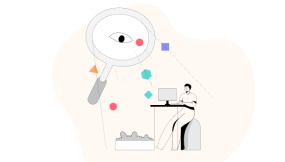We’re living in a digitalized era where around 7 billion people own a smartphone, and the forecasts for 2028 reveal that this number may exceed 7.7 billion. It’s no surprise that mobile app development is becoming increasingly popular.
Nowadays, mobile applications find significant use in the business industry, helping you improve your brand visibility, offer unique features to your consumers, improve the speed and quality of customer interactions, and a lot more.
The biggest challenge when creating an app is combining technical, UI/UX, and marketing capabilities into one working solution that satisfies your target audience. So we decided to help you understand the process of app development, explore the stages, and learn what you need to follow.
Mobile App Development in 2025
Mobile app development is a subcategory of software development, and it’s rapidly evolving. Technology advancements and consumer demands are directly driving the demand for mobile app developers. Therefore, experts predict that hiring a mobile application developer will be even more competitive in the future.
However, with everything being simplified nowadays, so is this process. One of the most common approaches for developing a mobile application is cross-platform development, which enables seamless integration across different OS, including Android and iOS. This also saves you valuable time and resources, as you only need one codebase.
Native development is also suitable if you require high-performing apps with deep OS integration, like AR or games. This approach helps you implement unique features for the mobile platform.
Currently, the most common programming languages are Java, Dart, Swift, Objective-C, Kotlin, among others. However, the language mobile app developers choose depends on the type of app they want to create, the features they want to include, and the platform they want it to run.
Request a free quote from Weelorum
We will help you to develop a great app for iOS or Android device!
Contact usWhat Should You Do Before App Development?
There are some things that you need to complete before the actual development of the mobile app. So, let’s go through each phase!
#1 Ideation
Before you do anything, you must have a project idea and make a prototype. This will help you see how the app will function and whether it can fulfill your goals. Here’s how you’ll understand what should be included in your app:
- Define the app goals. This refers to exploring and researching the market and coming up with a concept for your mobile app. You should know your target audience, find out which features will be the most beneficial to them, check out competitors and their offerings, as well as reviews, and think about how you’ll monetize the app.
- Carefully plan your app design. First impressions matter. In fact, they play a huge role in whether users will keep using the product or not. Therefore, you need to focus on the visuals, navigation, responsiveness, loading times, interaction options, features, colors, fonts, and size of the icons and text. Simply put, you must make the best of the UI and UX elements and avoid cluttered layouts or bright designs.
- Use wireframes. This will help you focus on functionality rather than design and map out user journeys. Identify where and how to integrate all the essential components, making them easily accessible.
- Follow the 3-click rule. Your app needs to be easy to use to be successful. Stick to the 3-click rule — create a hierarchy of content and minimize steps to complete certain tasks so that users can find what they need with only a few clicks.
#2 Market Analysis
The purpose of marketing analysis is to create a basis for making informed decisions in business planning in an uncertain market situation. Here are the main tasks:
- Market research and justification of market trends. You must analyze the market and understand its trends and tendencies. You will collect various important data, including customers’ preferences, competitive analysis results, risks and opportunities in your niche, etc.
- Analysis of the main factors affecting user demand. Users nowadays want simple, modern, and well-functioning apps that are equipped with the latest technology. Some of the main factors that drive user demand for mobile apps are user-friendliness, integration of necessary features, speed and responsiveness, UI/UX design, customization options, and customer support.
- Pricing analysis and justification. You should also explore the price range of competitors’ products to fit in the category. Also, this is crucial for determining how much to spend on the development process and whether it will provide you with a decent return on investment.
- Identification of real and potential competitors. Real competitors offer apps similar to yours and to the same target audience. Identifying your real competitors will help you see what they offer, how well it is selling, and whether users are satisfied with that. Potential competitors offer different apps but can potentially step into your niche/market and compete with you. Exploring both types of competitors allows you to plan strategically.
- Assessment of potential weaknesses and strengths of the project. You should know what gives your product a competitive advantage and what needs to be improved.
- Analysis of sales promotion methods. Clarify which promotion methods will help you increase your brand visibility, reach your target audience, and establish a positive image of your brand. This will help you understand what works better for your audience so that you can allocate resources reasonably.
#3 Development Approach
With the advancement of technology, you have a lot of choices for app development.
One of them is native development, which helps you create platform-specific apps. For example, if you want to build an iOS app, you’ll use programming languages like Swift or Objective-C. For Android apps, Java and Kotlin are the most used languages. Simply put, you’ll need separate codebases for Android and iOS products.
Native development ensures platform-specific features thanks to various SDKs and tools. It guarantees a smooth and intuitive customer experience as its practices are aligned with industry standards (iOS Human Interface Guidelines for iOS and Material Design for Android). Native applications also boast high performance and excellent responsiveness.
Cross-platform development requires lower development costs because you only need a single codebase for multiple platforms. The most commonly used frameworks are React Native & Flutter.
Hybrid application development refers to building an app that will work on more platforms, such as Android and iOS, without an issue. Basically, you’re just using a single code base that works on different OS. Basically, these apps balance the user experience of native mobile apps and the cost-effectiveness of cross-platform solutions because you’re using the same code. They can leverage hardware-dependent features through plugins, although their performance may not be smooth at all times.
#4 Interface and Design
The UI consists of all the graphics that set the base for the interaction with your app. It includes navigation, icons, menus, shortcuts, colors, fonts, etc. The visual side of the product needs to be very straightforward so that the app users can have an ultimate experience.
UX defines how users experience your mobile app. It refers to the quality of the app, like loading time and responsiveness. It is also responsible for the emotional response that your product evokes in users.
The easiest way to have a clear image of the overall look and performance of your app is to make a prototype. This will help you test the mobile app and see if it fulfills your goals and pre-determined criteria before you officially launch it.
You can rely on wireframes that will help you visualize how the app will look. There are three types of wireframes: low-fidelity, mid-fidelity, and high-fidelity.
The low-fi wireframe represents a less-detailed visualization of your page structure and layout. It focuses on the workflow and is the starting point for establishing your project goals. It includes filler text, placeholders, blocks, and more.
The mid-fidelity wireframe is a more refined model of your mobile application. It offers proper content spacing and different text weights. What’s more, the colors will be expressed with different shades of grey, not only black and white.
Ultimately, high-fidelity wireframes are the most detailed, pixel-specific projections of your application. They include almost all of the UI elements, final copies, and text hierarchy. Basically, it’s a helpful wrap-up for how your app will look.
#5 App Development Method
The two most popular methods of app development are building the product by yourself or hiring a team of experts.
If your goal is to save some costs, then the first option is the way to go. You can use no-code/low-code builders that will ease the process, provide you with some pre-built elements, and simplify your development journey.
Alternatively, you can hire experienced app developers. This is a costlier option, but if you find experts, you can rest assured that the app will be up and running as agreed.
Navigating the Post-Launch Challenges
Thorough preparation before starting app development is half the battle. However, post-launch and maintenance are equally important. So we are sharing our tips for this stage.
Master Various Types of App Testing
You need to prioritize security and usability testing to make sure your mobile app complies with relevant regulations and satisfies users’ needs.
Security testing refers to monitoring suspicious activities on your apps, which may indicate some cybersecurity threats. To prevent them, you should implement robust encryption protocols, regularly scan for vulnerabilities, and comply with numerous regulations (GDPR or HIPAA).
Performance testing is a must to deliver the best possible experience. Here, you should focus on the loading times of your product, responsiveness, error rates, and more. Any significant changes from the industry’s standard metrics require careful consideration.
But revealing the issue may be more complex than it looks. This is where iterative testing comes in handy. It involves making small and gradual changes to your app based on the test results or user feedback. It is an ongoing process that covers UX, performance, functionality, etc.
Don’t forget about cross-platform testing. The app should work equally well on Android and iOS, ensuring the same quality of performance and visuals. It comes with certain challenges and requires specialized, but this is a cost of a seamless experience & performance on various devices, which pays off in the long run.
Monitor the Performance Continuously
Monitor the app’s loading speed, crash rates, user engagement, and response times to detect issues proactively. Real-time optimization allows for prompt adaptation to changes and demands in the mobile landscape.
Prioritize User Feedback on Different Channels
User feedback can help the app grow and get better. By communicating with users, replying to them, and sharing the important milestones, you’ll find out what they feel about your product, detect the problems early, and build a loyal community that will contribute to the development process.
If you want all these stages of app development
to be implemented to the maximum benefit for your business,
get our team of experts to work on your project.
Contact usHow to Find Your Ideal Contractors for Mobile App Development: Questions to Ask
Now it’s time to figure out the list of questions to ask potential contractors to make sure their capabilities meet your expectations (in case you prefer hiring developers).
- Are the chosen application architecture and technology stack suitable for scaling?
Not every project will stay forever in its original interpretation – the needs of end-users change over time, as well as the level of workload on your application. That is why it is essential to discuss the possibility of further scaling of the project at the beginning of cooperation with your contractors.
- How will you interact with contractors after the project is released?
Unfortunately, there are situations when it is challenging for the owner to reach the development team after the completion of the project. As a result, upgrades are delayed, and the owner’s business suffers losses. That is why it is crucial to discuss with contractors whether they will be able to provide technical & maintenance support to a completed project quickly.
- How do you know if contractors have the experience you need in a specific business niche?
Although many development teams indicate on their websites the widest possible coverage of business niches, you, as a responsible business owner, should make sure for yourself that their words are not just big marketing promises. In particular, we recommend requesting a portfolio of projects from your business area and checking user reviews.
- Considering technical support and associated costs for maintaining server capacities, what will the project budget be?
You should understand that the end of the mobile applications development process does not mean the end of your investment in it. Even after its launch, you will need to pay for the maintenance of the server side of the application, technical support when needed and some other services.
Check with your contractors how high these associated costs can be for a year or several years ahead.
Weelorum Can Be Your Trusted Mobile App Development Partner
Weelorum’s team of experts offers mobile development services for a wide range of business niches. In addition to the project’s technical and non-technical requirements, we always consider its long-term business prospects and choose the best architecture and technology stack.
Thus, our clients receive high-quality software and a profitable business project. More than 30 large clients can already confirm the effectiveness of our approach.
Let’s get acquainted with the most significant projects that we have implemented.
Vortex
Vortex is a mobile app for an on-demand car wash service in the UAE. It is a user-friendly application that allows customers to quickly book a car wash, pay for it seamlessly, and track the status in real time. The business offers steam car washes right where your vehicle is parked. No more driving to the car wash and waiting in line.
Product details:
- Platforms: iOS and Android
- Languages: Swift, Java
- Tools: AWS Amplify, Stripe, Sendbird, Firebase, Google Analytics
- Team members: 12
- Development time: 8 months
The challenges we managed through the process:
- managing order fulfillment time and employee movement efficiently with limited resources (just one car and two washers).
- developing time slot logic that accounts for wash durations and travel times between orders.
- integrating with a vehicle database and automating the process of identifying vehicle details like brand, model, body type, color, etc.
- migration to Google Cloud from Amazon (which was initially requested by the client) due to limitations and performance issues.
MicroREC
This app allows users to capture high-quality photos and videos of microscopy and slit lamp procedures, keep them separate from personal photos, share them online or on TV screens, and publish them. It was designed specifically for doctors and microsurgery practitioners.
Product details:
- Platforms: iOS, Android, Cloud Backend
- Languages: Swift, Kotlin
- Databases: Firestore
- Framework: RxSwift, Kotlin Coroutines
- Team members: Team Leader, iOS, Android developers, QA testers, Project Manager
- Development time: 6 months
The challenges we managed through the process:
- porting React Native app to Native iOS and Android app to improve the camera functionality and streamline the user experience.
PhotoCopy
PhotoCopy is an app to find beautiful photo spots on the map and contact professional photographers near you. Our app also helps you take photos like a pro.
Product details:
- Platforms: iOS, Android, Cloud Backend
- Languages: Swift, Kotlin
- Databases: MongoDB
- Framework: RxSwift, Kotlin Coroutines
- Team members: Team Leader, iOS, Android developers, QA testers, Project Manager
- Development time: 1 year
The challenges we managed through the process:
- developing an MVP according to the timeline and budget constraints, with a high ratio of quality and development speed.
Find out about our company’s other projects on our portfolio page.
Discover new business prospects
for yourself!
Contact us
Final Thoughts
Mobile application development is a rather complex process that requires idea validation, thorough market analysis, and choosing the most suitable development approach &method.
However, this process doesn’t finish with developing the app. You should also take care of the post-development process, such as testing the app and focusing on the feedback you receive from users.
So, if you need assistance with developing the perfect app, contact our Weelorum experts and see how we’ll enhance your product!
FAQ
What engagement models do you offer?
We offer three engagement models, including Fixed Price (recommended for small or urgent projects), Time and Materials (ideal for scalable projects or projects with vague requirements), and Dedicated Team (suitable for large companies that need to expand their team quickly, or startups looking to reduce costs).
What are the most important stages in the mobile app development process?
The most important stages include ideation, market analysis, selecting a development approach, designing the app, and choosing a development method. However, testing the app afterward is just as important.
How do I avoid mistakes in the app development process?
To avoid mistakes, you need to identify your goals and needs, select a reliable development team (if you go for this method), set a clear budget, engage in prototyping, develop neat UI and high-quality UX, test the app, and consider user feedback. If this sounds like too much, entrust the work to qualified experts.


